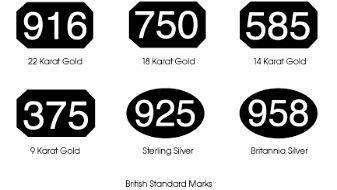Caratage is a Measure of Weight
 Egyptian Carob Drink Seller
Egyptian Carob Drink SellerThe percentage measurement of the gold purity is called "Caratage" and comes from the Arabic word "Kharoub" (Carob) derived from the root word "Carubis" (Carob seeds) which were used in Mesopotamia (modern-day Iraq) as a measure of weight. (Bet you didn't know that!)
Decided to get physical and invest in gold Antique Jewelry? Then the gold purity of your item is an important consideration. It is a measure of the item's quality and value. Terms that designate the gold purity are the words: carat or karat. (correct symbol: K or kt)
The letters: K or kt indicates the percentage of gold present in the gold alloy, with 24 karats being the highest, i.e., Pure gold.
The word "carat" is derived from the fruit of the carob tree. Ahhhh Ha! Here is the confusion! The same root word has been applied for both purity measurement and weight measurement.
The seed of the plant was called "carubis" in Mesopotamia and was used as a unit of weight measurement (mass, i.e., NOT purity). This unit of mass measurement was based on the carob seed, which had an approximate weight of around 0.2 grams. It was first used in Mesopotamia, now modern Iraq, to weigh gold, pearls, gemstones and everything that was deemed small and precious.
Caratage by any other name? The word CARAT in Italian is called CARATO; in Arabic - QIRAT; in Greek - KREA'TION.
The purity of Gold Coin Jewelry, for example, is derived from the gold content, the fineness, or simply, the quality of the gold. GP markings on gold jewelry usually indicate the metal used in the construction is "Gold Plate" and not comprised of solid gold.
Many Antique Jewelry Hallmarks may include the Millesimal mark or the Millesimal Fineness.
This is a system denoting the purity of gold alloys by parts per thousand of pure metal in the alloy (this system also denotes the fineness of platinum and silver).
The millesimal fineness is usually rounded to a three-figure number, particularly where used as a gold hallmark. For example, an alloy containing 75% gold is denoted as ‘750,’ known as 18k gold.
|
Following these simple guidelines about caratage, you will be able to identify, and period date Antique Gold Jewelry with a lot more accuracy.
Researching British Hallmarks, which includes researching Standard Marks, City Marks, Date Letters, and Maker's Marks is a basic guide to hallmarks, and it's free on Antique Jewelry Investor! Don't forget to bookmark the page;-)
Karatage & Caratage - What's the Difference?
The word is often used interchangeably. Gold bearing the marks "KT" or "CT" is often just because of the geographic location of the hallmarking.
Britain, Canada, Australia, New Zealand, South Africa and other countries originating from the British Empire use the abbreviation ct for carat - as in 9-carat gold, or 9ct. South-East Asia, China, Europe, and the United States use the word karat. Jewelry made in these countries is often marked - 14k or 14k or 14kt, etc.
To avoid confusion, Europe and the US introduced the designation "kt," to differentiate between carat (for gold quality) and carat (for gemstone weights).
Diamonds are always weighed in carats and points. 100 points = 1 carat weight. One carat equals a fifth of a gram.
To avoid confusion, "kt" or "k" (US standard as in 14K gold), will be used when referring to gold purity measurement throughout this site, to avoid possible confusion with diamond and gemstone measurement of weight that is also "carat".
Although there is no International Hallmark System, we do have an International System of compulsory marks attesting the gold content. This will range anywhere from 8 kt up to the highest fineness of gold that is 24 kt gold jewelry. See Compulsory Marks and Content below:
Caratage | Compulsory Marks
- 9 k gold - 375
- 14 k - 585
- 15 k - 625
- 18 k gold - 750
- 22 k gold - 916
- 99% pure gold - 990
- 99.9% pure gold - 999
- 800-grade silver - 800
- sterling silver - 925
- Britannia Silver - 958
- 99.9% pure silver - 999
- 85% Platinum - 850
- 90% Platinum - 900
- 95% (UK standard) Platinum - 950
- 99.9% pure Platinum - 999
- 24 Kt. - 100% Gold
- 18 Kt.-75% Gold
- 14 Kt. - 58.3% Gold
- 10 Kt. - 41.7%

But when it comes to Incredible India, as Sita Devi's collection certainly confirms, Indian Gold Jewelry is often made of the highest caratage on earth, yep, you guessed it - 24K!
Now the big question when investing is this: Is the caratage really that important when investing in antique gold Jewelry? After all, Antique Victorian Jewelry, diamond set, was topped in Silver, Not gold? Well, the answer to that question is Yes and No... the gold content counts as ONE store of value.
Antique Gold Jewelry has TWO very distinct stores of value: The Antique store of value (determined by condition and complex historical factors) and then the Gold store of value itself, the cartage, determined by todays gold price.
Since antiquity, throughout the History of jewelry, countries, and governments have kept a close eye on their gold reserves.
In the sixties, the Indian government prohibited people from buying gold bars and coins. Investing in Antique Indian Jewelry? Read More HERE
In the United Kingdom, one can still make and sell 9, 14, 18 and 22-carat gold jewelry but not 12 as the latter is not even recognized by law.
In other countries, such as Portugal, for example, any Jewelry lower than 12 k (50% gold or 500 fineness) cannot even be described as gold because 19.2 carats is the standard. Today, the lowest recognized standard is 8 k or 33.3% gold content that is in Germany.
The Low Caratage Advantage
There are advantages as to why you should invest in gold of Low Caratage. For starters, there's a wider range of colors to choose from in low carat gold.
It's stronger - lower the gold content and it increases the strength over pure gold (999 fineness), leading to improved wear and more scratch-resistant properties and jewelry less liable to distortion and damage. Genuine Antique Jewelry was usually not made from high carat gold, exception is India. Read the Gold Rules next, for the periods that different cartage was in circulation.
Gold Rules of Caratage
✔ Daily gold prices are quoted based on pure gold, or 24 carats.
Read how the price of gold is fixed Here...
✔ 24 k gold jewelry is theoretically 100% gold.
✔ All Antique Victorian Jewelry, Diamond-set was topped in silver to make the Diamonds appear whiter.
✔ 14 carat Gold was used for the screws and butterfly backs.
✔ White Gold was substituted for Silver in ca. 1910.
✔ In 1854 there was a monumental change to British hallmarking, by allowing the carat number plus the decimal point, ie. 9 with .375, 18 with.750 to be marked on Jewelry.
✔ 15ct gold was the Victorian favorite.
✔ 9 ct denotes modern British Jewelry.
✔ In China, 24-carat gold jewelry is also known as "Chuk Kam".
✔ 21-carat gold, fineness of 875 is the recognized standard in Arabic countries.
✔ 22-carat gold, fineness of 916 is the recognized standard in India and the subcontinent.
✔ Gold tends to wear away over time and decreases in volume and weight when in use.
✔ Before 1854 there were no 9ct, 12ct or 15ct Gold marked British Jewelry.
✔ 12 ct and 15 ct were discontinued in 1932 in Britain when the 14ct standard was introduced.
✔ Platinum is over thirty times rarer than gold.
✔ The properties of Platinum allow for more intricate and finer jewelry designs than possible with Gold.
✔ The content in Platinum is indicated in parts per thousand and not in carats as in Gold.
✔ Unlike Gold, Platinum has not got a long history of use in Jewelry, anything earlier than 1900 is rare.
✔ The hardness of platinum whilst being an attribute makes it difficult to work from the jewelers perspective, and takes longer in making and finishing a platinum piece of jewelry than in any other precious metal.
✔ If an item of gold is solid and sealed by solder joins, then any part of the item can be stamped, as the mark refers to all of it.
Have You Seen The Jewel Of The Month Yet?
Photo Credit (top of page) - http://elagha.net/print.php?id=7422
Return to top of the page to Caratage
Return to Antique Gold Jewelry
Return to Antique Jewlery Investor Home Page
